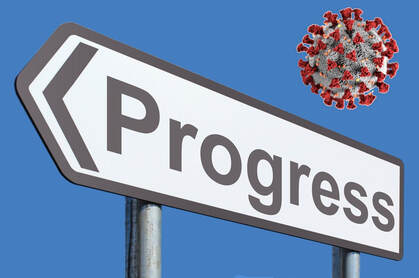 I have read many social media posts during the COVID-19 pandemic by people that claim to be frustrated and confused with scientists. They say that first it was “masks are not necessary” and now it’s “wear masks”. First millions were projected to die, and then tens of thousands. A test for COVID-19 is put out, but then it doesn’t work. Articles are published showing hydroxychloroquine is dangerous and clinical trials are paused, but then then the articles are retracted, and the trials are continued. Hydroxychloroquine is authorized to be used, and now no. These people claim that they are tired of flip-flops, dithering, and mistakes. Some are even arguing that these happenstances are not random, and that they represent a pattern which is part of a conspiracy by scientists aligned with pharmaceutical companies, the left, the World Health Organization, and the Gates Foundation to scare US citizens, impose on them, deprive them of cheap effective therapies, and take away their freedoms. The above reaction is not unexpected. We know that belief in conspiracy theories greatly increases in times of social upheaval that generate uncertainty, stress, and anxiety. But apart from that, a lot of the exasperation and confusion some people have with scientists and the scientific process stems from unrealistic expectations regarding what science is, what scientists do, and how they do it, coupled to the realities of doing research in the current environment. So let me set the record straight. The history of science is awash in stories where scientists have made mistakes, flip-flopped on theories, and retracted articles in their pursuit of truth. Some of these mistakes occurred because of faulty data, technology, or procedures, and other mistakes involved scientists having wrong ideas. Normally scientists have time to sort out all these mistakes and methodological issues over the course of a few years (or in some cases decades), and they can come up with a reasonably robust approximation to the truth. This is a messy process with a lot of uncertainty, missteps, and blind alleys, but most of the time this process happens away from the limelight. When most folk come into contact with scientific discovery, what they see is the end product of this process, the tip of the iceberg if you will, and they are usually oblivious to all the blood sweat and tears that has taken to get there.
So, take this scientific process with all of its imperfections, mistakes, and uncertainties, and put it in the middle of a pandemic where people are dying and society needs answers, tests, therapies, and guidelines, NOW! You have just rushed the scientific process tenfold, and you have also magnified the potential for screw-ups by the same amount. Add to this the fact that COVID-19 research, from vaccines to hydroxychloroquine, has been politicized, and that every relevant announcement is interpreted in favor or against something and amplified orders of magnitude by the news cycle and social media. Finally, factor in that the general public is being exposed on a daily basis to the process of science in this difficult environment but often filtered through the sieves of partisan pundits that distort the science. What do you get? What you get is one sad toxic mess. Very preliminary or questionable research is catapulted to the forefront of public attention and presented as the truth, whereas solid research is nit-picked to find flaws in order to dismiss it. Honest mistakes or changes of opinion by scientists are interpreted in the worst possible way to question the trustworthiness of the individuals involved. Many excellent scientists doing what they’ve always done the way they’ve always done it are now portrayed at best as Keystone Cops or at worst as sinister characters of questionable morals whose motives behind their actions are divorced from the well-being of the public. No wonder some people are frustrated and confused with science and scientists! But my message to these people is the following: Don’t concentrate on the PROCESS of science. Focus on the PROGRESS of science. Progress? Yes, progress! Science and scientists have made an immense amount of progress during the COVID-19 pandemic. Scientists have isolated and sequenced the genetic material of the virus and generated a huge amount of information that has been used (among other things) to produce vaccines that are being tested for safety and efficacy, to identify strains of the virus which allow us to trace its spread, to generate diagnostic tests to detect viral infection in individuals, and even to detect the virus in sewage in order to identify which communities may have a rising caseload! At no time in the history of infectious diseases has progress happened so fast. Contrary to what was initially believed, scientists have discovered that the SARS-CoV-2 virus (which causes the disease COVID-19) can infect many cell types once it has gained access to the body through the airways, including those of the lining of blood vessels, and this has changed the way we view the disease, saving and improving the lives of patients. For example, one of the problems with seriously sick patients is blood clots, and the use of anticoagulants is helping to save lives. Scientists have also tested several drugs against COVID-19, and have found steroids to be effective at reducing mortality in the sickest patients. Other approaches that may also be useful, and are being tested, are the drug remdesivir and convalescent plasma. After being ambivalent with regards to masks, scientists discovered that a large amount of COVID-19 transmission occurs from people that are asymptomatic or presymptomatic. This discovery led to the issuing of the guideline to wear masks, which along with social distancing and other mitigation measures have bought us time to better understand the virus and saved lives. At the level of the hospitals, doctors integrated domestic and international experiences to develop better ways of preparing for a surge in hospitalizations to handle large amounts of patients. They also recognized that delaying ventilation and placing patients on ventilation in the prone position could improve their odds of surviving. The PROCESS of science can be messy and confusing, and now that it is out in the open on a daily basis, it is being presented to the general public in the worst possible light by many people interested in disavowing science or pursuing their own agendas. When it comes to science, try to understand that scientists are human. They have disagreements, they make mistakes, and they change their minds. You may not understand all the technical terms and issues and all the back and forth among scientists and what’s true and what isn’t. But the PROGRESS of science is a different matter. Science has delivered for us in the past, science is delivering for us now, and science will continue to deliver for us in the future. Concentrate on the end result, on what scientists have achieved. Progress over Process! Progress sign by Nick Youngson from Alpha Stock Images was modified and is used here under an Attribution-ShareAlike 3.0 Unported (CC BY-SA 3.0) license. Coronavirus image by Alissa Eckert, MS; Dan Higgins, MAM, from the CDC's Public Health Image Library is in the public domain and was modified.
2 Comments
8/20/2020 Hydroxychloroquine: There are Arguments and Counterarguments, but You Can't Have it Both WaysRead Now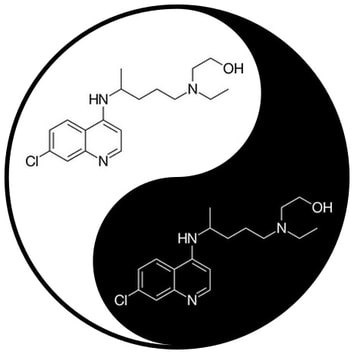 I have had several exchanges with the folks that argue that hydroxychloroquine (HCQ) is an effective treatment for COVID-19, and in this post I want to go over some of the arguments and counterarguments that have been bouncing around the internet, and try to make sense of them within a logical framework. Other posters and I have pointed out to the HCQ proponents that the best-designed studies have not found any effects of HCQ administered alone or with antibiotics (1, 2, 3, 4, 5, 6,and 7). In response to this, the HCQ proponents argue that these studies used HCQ doses that were too high and even (they claim) toxic for the study participants. Some HCQ proponents have suggested that these high doses were administered on purpose to make the HCQ groups in the studies fail, and they infer a nefarious purpose behind this, such as the study authors selling out to Big Pharma to discredit a cheap treatment for COVID-19 (HCQ) in favor of vastly more expensive treatments. Why did these studies use these high doses? There was nothing nefarious about choosing those high doses. It was done according to scientific rationales based on mathematical models that incorporate parameters such as the absorption, distribution, metabolism, and excretion of HCQ, and its activity against the virus in cell culture, coupled to the understanding that administering a short course of HCQ for a viral infection (which requires rapid drug penetration into tissues for effective prompt antiviral activity), is different from dosing HCQ for chronic conditions like rheumatoid arthritis or lupus. Specifically, not only is HCQ a weak antiviral, but HCQ has what is called a large volume of distribution. This is a pharmacokinetic parameter that describes the amount of a drug present in plasma in relation to the amount present in the rest of the body. Drugs (such as HCQ) with a high volume of distribution take longer to reach therapeutic concentrations in the blood, and require a loading dose to quickly reach the therapeutic concentration, followed by maintenance doses to sustain these therapeutic concentrations.
The dosing in these studies was carefully engineered based on knowledge of known toxicity of chloroquine overdoses and other considerations to achieve high HCQ concentrations while minimizing toxic side-effects. The high doses actually favored HCQ. If these studies had used the low doses that HCQ proponents advocate in social media, the studies would have been open to the criticism that the doses the studies used were not high enough for HCQ to be effective! I want to also dispel the notion that HCQ is being shot down because it is a cheap therapy from which Big Pharma will not profit. One of the trials that did not find an effect of HCQ, the Recovery Trial, did find an effect of steroids in reducing mortality for patients with COVID-19 receiving respiratory support, and steroids are generic cheap medicines which are now being used successfully to save the lives of COVID-19 patients. If Big Pharma could control the outcome of the HCQ arm of the study, why would it allow the steroid arm of the trial to succeed depriving them of millions of dollars they could have earned with their expensive therapies? Make no mistake: If HCQ alone or with antibiotics had been found to be effective, we would have seen it in the Recovery trial and the rest of similarly well-designed clinical trials. Further evidence against HCQ as a single agent that I’ve mentioned before, includes: 1) People who suffer from lupus and were taking HCQ when the pandemic started, were not protected from COVID-19 compared to those lupus patients that were not taking HCQ, and 2) HCQ does not protect macaque monkeys or hamsters against COVID-19. Additionally, as I have also mentioned before, HCQ has been found to have no antiviral action in cells from the human airways, which is probably due to the inability of HCQ to block a specific pathway of viral entry into these cells. Under the massive weight of the evidence some of the HCQ proponents have reluctantly admitted that HCQ alone does not work against COVID-19, but they claim that this is irrelevant because HCQ was not coadministered with zinc. The so called “zinc hypothesis” of HCQ action states that it is zinc that has the antiviral action (it prevents replication of the virus), and that the role of HCQ is to facilitate the entry of zinc into the cells. HCQ proponents claim that the clinical trials using HCQ alone are silly because HCQ is being used in a fashion that won’t be effective (i.e. without zinc). All the clinical trials I mentioned above with HCQ as a single agent or with antibiotics, but no zinc, were designed and commenced in the early phase of the pandemic when zinc was not part of the argument. The initial trials that brought HCQ to the attention of the world and the initial hypothesis of HCQ action did not involve zinc. Scientists were testing the hypothesis that was current at the time. This is perfectly reasonable and understandable. However, at least one clinical trial did analyze a subset of patients who were taking zinc supplements (scroll down to table S8) and found that this did not make a difference in the treatment outcome. But because this was not part of the treatment of the formal study protocol, this result is not conclusive. There are several ongoing clinical trials that include hydroxychloroquine and zinc, so we are waiting for those results to decide if the combination of HCQ and zinc works Finally, I need to address an issue that I have seen played out over and over in social media. HCQ proponents dismiss again and again any HCQ trial that does not combine the drug with zinc, but at the same time cheer and defend the results of trials that find a positive effect for HCQ even if it was not used with zinc, such as the one from Dr. Raoult’s lab or the one from the Henry Ford Health System. And when these trials are criticized for having biases that compromise their interpretation (which they do: big time), HCQ proponents lash out at the critics and insult them calling them stooges of the establishment who have sold out to Big Pharma interests that want to shoot down HCQ even if it kills tens of thousands of Americans. If HCQ does not have an antiviral activity of its own and just acts as a facilitator for zinc to enter the cell and stop viral replication (like the zinc hypothesis proposes), then trials that use HCQ alone SHOULD NOT work. You can, of course, argue that other effects of HCQ besides getting zinc in can produce some positive results, but they would certainly be far from stellar. The fact that trials such as the one from Dr. Raoult’s lab or the Henry Ford Health System found impressive results with HCQ alone actually raises a huge red flag, because they indicate the extent of the biases that compromised the interpretation of the results. This is why we can’t rely on observational studies like these to come to meaningful conclusions. My message to HCQ proponents is that science is about discriminating between alternative hypotheses. If you argue that the best trials found no effect because you need to administer HCQ with zinc in order for the therapy to work, you can’t argue at the same time that HCQ has great effects on its own. You can’t have it both ways. Yin Yang Image by Gregory Maxwell and the image of hydroxychloroquine by Fvasconcellos are in the public domain and were modified 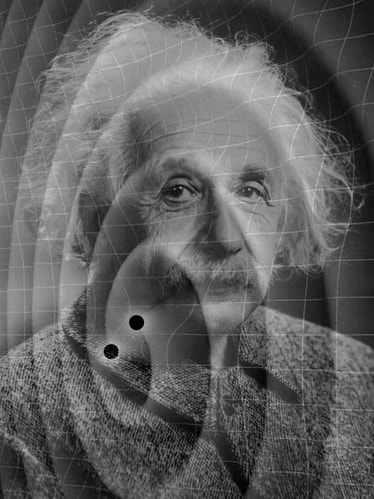 Einstein and Gravitational Waves Einstein and Gravitational Waves So far, the greatest achievement of physics in this century is the detection of gravitational waves. These are ripples in the fabric of spacetime created in titanic explosions millions to billions of light years away, such as the merger of black holes or the collision of neutron stars. The arrays of massive equipment that were used to detect the waves as well as improved versions under construction, will allow us to look at the universe in a new way and usher in an exciting era of space exploration. The detection of these waves represents the culmination of decades of arguments, counterarguments, mistakes, dead ends, and failed attempts at conceptualizing and detecting the waves by some of the greatest minds to have walked the planet. Chief among them was Albert Einstein. And Einstein’s story, as most scientific stories are, is complicated. While others had considered and argued for gravitational waves, it was Einstein who formally laid the mathematical foundation for the existence of these waves with his 1916 article on General Relativity. However, the math was fiendishly complex and dependent on systems or coordinates that had to be chosen carefully. The conclusion that the waves existed was not straightforward, and was dependent on how you approached the calculations. Einstein himself was skeptical about the reality of the waves, and made it clear in letters sent to colleagues. Einstein and the scientist Nathan Rosen revisited the existence of gravitational waves again in 1936. After doing the elaborate math, they came up with an explanation of why the waves could not exist, and they submitted their research for publication in a leading physics journal, The Physical Review. The journal sent the article to an anonymous reviewer who found a mistake in Einstein’s calculations, and the article was not accepted. This greatly annoyed Einstein, as he had not authorized the journal to show his work to an independent reviewer, and he submitted the article to another journal which accepted it for publication.
On the meantime, the independent reviewer, the physicist Howard Robertson, managed to contact Einstein. By then Einstein had taken another look at his article and figured out there was something wrong with it. Without telling him that he was the reviewer, Robertson suggested to Einstein the right approach to perform the calculations. So Einstein redid the calculations and came to the opposite conclusion. Gravitational waves existed after all! He contacted the journal to prevent the publication of the article with the old conclusion, he rewrote the article, and finally published it with the new conclusion in 1937. However, until his death in 1955 Einstein remained ambivalent about the reality of these waves, and whether they could even be detected if they indeed were real. His coauthor in the 1937 article, Nathan Rosen, was also skeptical regarding whether gravitational waves were more than a mathematical construct, and he published articles arguing against them using controversial mathematical procedures. In the late 1950s, several scientists built upon Einstein’s work and developed the mathematical approaches that firmly established the theoretical rationale for the existence of gravitational waves within the framework of Einstein’s theory of relativity. It would be 60 years after Einstein’s death before gravitational waves were finally detected. The story behind gravitational waves is a success story of science and perseverance by generations of scientists with Einstein playing a central role. However, I wondered what would have happened if the research into gravitational waves had become politicized in the age of social media after, for example, a heavy-weight political personality publicly balked at the price tag of proposed gravitational wave detectors and labelled the science “fake science”. I imagine some of the resulting messages in social media may have looked something like this: As it turns out the “genius” published in favor of #gravitationalwaves but in private argued against them! #Einsteinhypocrite He was honestly for them, then honestly against them, and then honestly for them again? Yeah, right! #Einsteinflipflop Why did a leading physics journal reject Einstein’s article against gravitational waves, and then a reviewer for the same journal secretly influenced Einstein to change his calculations and his conclusions? #ThePhysicalReviewgate #gravitationalwavescandal #Einsteinfraud sold out to the scientific establishment that wants to milk the taxpayers for their hard-earned money to finance fake projects! #gravitationalwavehoax Einstein and Rosen didn’t think gravitational waves would ever be detected, but now physicists are asking for billions to do just that. #fakescience Any money for the #gravitationalwavescam is money that is not used to save lives and help ordinary Americans. Stop feeding the bureaucratic beast with #fakeprojects! Stop killing American Citizens! You get the idea? Now imagine doing science under this environment. If you publish anything “for” or “against” gravitational waves and are vocal about it, thousands of people may roast you in social media. Your past activities and statements will be scrutinized with a fine-tooth comb to find something that can be used against you. Any mistake you may have made, any publication you may have retracted, any change of opinion you may have had, may be incorporated into memes containing misleading or false statements about you that may go viral all over the planet. Someone may figure out your e-mail and phone numbers and make them available online. Dozens of people may contact you leaving insulting or threatening messages. Depending on your visibility, you may have to get or be assigned a bodyguard. Would gravitational waves ever have been detected if gravitational wave research had been politicized in this fashion? The above scenario illustrates how you can take hold of the often complex and messy reality of human beings doing science (or any other activity for that matter) and twist it to argue in favor of nefarious purposes smearing the reputation of those involved and creating stress and anxiety for many people who don’t need it. Even though the specific scenario I presented concerning gravitational waves is fictitious, similar things are currently happening in the fields of climate change, vaccine science, and the research into the effectiveness of hydroxychloroquine and other drugs against COVID-19. Do not politicize the science! The photograph of Albert Einstein by Orren Jack Turner obtained from the Library of Congress, and an artist’s rendition of gravitational waves from NASA, are both in the public domain and were merged and modified. 8/8/2020 Cultured Cells, Dr. Fauci, and a Bold Hypothesis to Explain Why Hydroxychloroquine Alone Doesn't Work for COVID-19Read NowHow did the notion arise that hydroxychloroquine could be used against the SARS-CoV-2 virus that causes COVID-19? I want to spend some time on this because it involves an article that is often quoted to slander Dr. Fauci. 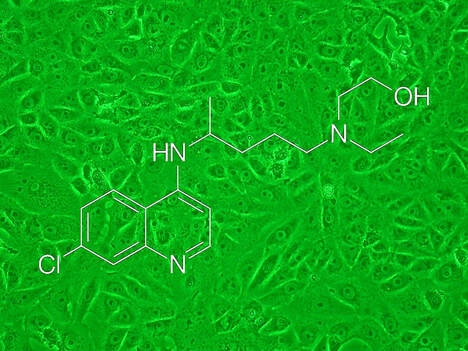 Vero E6 Cells in Culture and Hydroxychloroquine Vero E6 Cells in Culture and Hydroxychloroquine In 2005 there was a study where chloroquine (a drug related to hydroxychloroquine) was found to be effective at reducing infection with the virus, SARS-CoV (which is 79% related to the COVID-19 virus, SARS-Cov-2), in primate cells in culture. Early on in the COVID-19 pandemic, it was claimed that Dr. Fauci was lying when he said that there was no good evidence for the effectiveness of hydroxychloroquine against COVID-19 because he has known about this article for 15 years. This claim is still being made over and over in social media, and has even been retweeted by some high profile people in the hydroxychloroquine debate. Any scientist who has worked with cells in culture (for example, me) will tell you that extrapolating from cultured cells to the full organism is fraught with peril. The metabolism of cells in culture and the way they react to chemicals or biologicals can be substantially different from the way they react as part of the full organism. In the full organism, cells are in a three dimensional matrix, interacting with other cells types and exposed to the daily cycles of fluctuations in levels of nutrients, hormones, temperature, oxygen, etc. Also, any drugs delivered to the organism, depending on the mode of delivery, may have to pass through several layers of other cells before they reach their intended target. In culture, the cells are in a two dimensional environment interacting only with cells like themselves under fixed conditions. When you deliver a drug to the cells in culture, it reaches them right away. So, more often than not, what you get using cell culture, is different from what you get in the full organism. Additionally, the cells used in the study mentioned above were Vero E6 cells. This is a cell line derived from the kidney of an African Green Monkey, and these cells even have a different number of chromosomes compared to those of the original monkey. Infecting cultured cells from the kidney (not the airways) of a monkey (that are different from human cells and even from the cells of the original monkey) with the SARS-Cov virus (which is different from the COVID-19 virus), treating them with chloroquine (which is different from hydroxychloroquine), and then extrapolating the results to the full human being to argue that Dr. Fauci “…has known for 15 years that chloroquine and it’s even milder derivative hydroxychloroquine (HCQ) will not only treat a current case of coronavirus (“therapeutic”) but prevent future cases (“prophylactic”).” is scientifically inaccurate, to say the least. Then why do scientists use these monkey cells to test compounds against viruses that infect humans? The answer is that these cells can be infected with many viruses and they are a convenient, but very preliminary, test that can be used to screen many compounds quickly, and identify those that display activity against viruses. Once a compound is identified, it is subjected to more complex tests that may involve human cells and studies with whole animals to see if it still works. As it turns out, hydroxychloroquine has been recently been tested with these Vero E6 cells, and it has been found to have antiviral activity against the SARS-CoV-2 virus. But can hydroxychloroquine stop the COVID-19 virus from infecting cells from the human airway, which is the main site of entry of the virus into the body? A study performed with reconstituted airway epithelium developed from primary human nasal or bronchial cells indicated that hydroxychloroquine had no activity against the COVID-19 virus. Why would this be the case? A group of researchers have proposssed a very clever answer to this question. There are two ways that the COVID-19 virus can get into a cell. One involves the uptake of the virus into an intracellular compartment called the “endosome”. The endosome is a compartment that is acidic which is optimal for the functioning of an enzyme called Cathepsin L (CatL) that acts on the virus and activates it. One of the effects of hydroxychloroquine is to lower the acidity of the endosome which impairs the activity of CatL and thus hinders the activation of the virus. However, the cells of the human airway epithelium have low levels of CatL. In these cells, the entrance of the virus is achieved through a second route involving activation by an enzyme called TMPRSS2 which is not dependent of endosomes or acidity and is therefore not affected by hydroxychloroquine. Thus the CatL (hydroxychloroquine sensitive) pathway is predominant in Vero E6 cells, whereas the TMPRSS2 (hydroxychloroquine insensitive) pathway is predominant in the human lung cells. If you use Vero E6 cells that have been genetically engineered to express the TMPRSS2 enzyme (and thus have the TMPRSS2 pathway too), then hydroxychloroquine loses its ability to inhibit the COVID-19 virus infection of the cells! Other researchers have also found that the inhibition of SARS-CoV-2 entry into cells by hydroxychloroquine is antagonized by the presence of the TMPRSS2 pathway. The above is a bold hypothesis that explains why hydroxychloroquine alone has not been found to work in the best-designed studies (1, 2, 3, 4, 5, 6, 7) performed so far. The reasoning is that it does not work because it doesn’t affect the TMPRSS2 pathway of COVID-19 virus activation that is the predominant viral activation pathway in human airway cells! This hypothesis also eliminates the original rationale to use hydroxychloroquine, which arose from using Vero E6 cells as a screen, and it shows how wise Dr. Fauci was in not giving a lot of importance to that very preliminary 2005 study. Nevertheless, notice I mentioned that the above proposal is just a hypothesis. Some people have interpreted the results to mean that hydroxychloroquine reduces the COVID-19 viral infection in monkeys, not humans. However, hydroxychloroquine does not reduce or prevent COVID-19 infection in macaque monkeys. More studies are needed before we can conclude that this is the reason why hydroxychloroquine doesn’t work in humans. However, if you are one of the people that argue that hydroxychloroquine by itself is not active (has no antiviral activity), but rather that it enhances the uptake of zinc which has the real antiviral action, then this hypothesis does not affect your claim. Whether zinc acts with hydroxychloroquine to ameliorate or prevent COVID-19 remains to be demonstrated in well-designed clinical trials (and several are ongoing). But what we can say right now is that the best evidence we have so far indicates that hydroxychloroquine IS NOT effective by itself or with antibiotics against COVID-19, and it’s time we started accepting this. Micrograph of Vero Cells under green light (100X) by Y tambe is used here under an Attribution-Share Alike 3.0 Unported license. This micrograph was merged with an image of hydroxychloroquine by Fvasconcellos which is the public domain. As modern science took off in the late 19th and early 20th century, women struggled to join the ranks of the scientists. There were social mores against the education of women claiming that doing so would make them “unmarriageable”, as well as notions (some enshrined under the guise of “science”) such as that women were more “unreliable” and “unstable” compared to men because the uterus in women made them more prone to weaknesses and illnesses (the word “hysteria” comes from the Greek word for uterus). Some prominent doctors even argued (I’m not kidding) that higher education placed women at risk because diverting blood from the reproductive organs to the brain could result in nervous collapse, physical breakdown, and infertility! But even when women did get an education and became scientists, they faced many obstacles to the advancement of their careers and experienced difficulties in getting paying jobs as scientists and earning the same as men. Some of these obstacles are still in place nowadays. A combination of the early dearth of women in science coupled with the discrimination they had to endure resulted in women being underrepresented in the accolades to scientific achievement, the most important of which is the Nobel Prize. As of 2019, only 20 Nobel Prizes have been awarded to women in a scientific discipline compared to 596 to men. In this post we will learn about the ladies who attained the highest laurel in science. 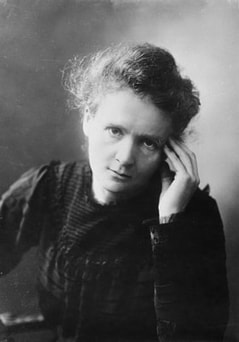 Marie Curie Marie Curie Marie Curie was a Polish-French physicist who with her husband Pierre Curie won the Nobel Prize in Physics in 1903, which they shared with Henry Becquerel, for work performed in the emerging field of radiation. The French Academy of Science wanted to nominate only her husband and Becquerel for the prize, but Pierre interceded for her and got the Academy to include Marie’s name in the nomination. Marie Curie also won a second Nobel Prize, this time in chemistry, in 1911 for her work in discovering the new elements Radium and Polonium (her husband had died in an accident in 1906). She is the only woman to have won two Nobel Prizes, and one of the two persons who have earned the prize in separate disciplines.  Irene Joliot-Curie Irene Joliot-Curie Irene Joliot-Curie was a French chemist and physicist and the daughter of Marie and Pierre Curie. She shared the Nobel Prize in Chemistry with her husband Frédéric Joliot-Curie in 1935 for their discovery or artificial radioactivity. Their discovery made possible the synthesis of radioactive elements for specific applications. Yet Irene Joliot-Curie was often discriminated against by people who argued that she was just an assistant to her husband’s work. 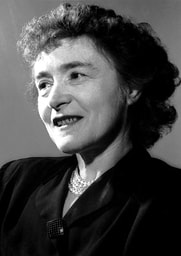 Gerty Theresa Cori Gerty Theresa Cori Gerty Theresa Cori was an Austro-Hungarian-American biochemist who with her husband Carl Cori won the Nobel Prize in Physiology or Medicine in 1947, which they shared with Bernardo Houssay, for important work on how the body metabolizes carbohydrates. This work benefited the treatment of diabetes. Gerty Cori became the first woman to win the prize in this discipline, but she encountered discrimination during her life not only for being a woman but also for being Jewish. 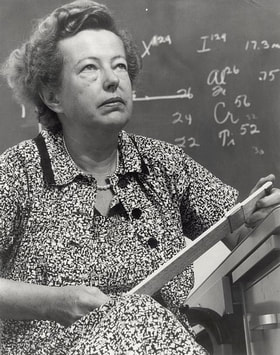 Maria Goeppert-Mayer Maria Goeppert-Mayer Maria Goeppert Mayer was a German-American Physicist who won the Nobel Prize in Physics in 1963, which she shared with J. Hans D. Jensen and Eugene Wigner, for the elucidation of the structure of the nuclear shell of the atom. Goeppert Mayer became the first woman not to share a Nobel Prize with her husband (the exception being the second Nobel Prize of Marie Curie), and the second woman to earn a Nobel Prize in Physics. It had been 60 years since Marie Curie had won hers, and it would be 55 years before another woman won this prize again (see later).  Dorothy Crowfoot Hodgkin Dorothy Crowfoot Hodgkin Dorothy Crowfoot Hodgkin was a British chemist who won the Nobel Prize in Chemistry in 1964 for her work in using techniques of X-ray diffraction to determine the structure of many biological molecules, among which were the antibiotic penicillin, vitamin B12, and the hormone insulin, all of which made possible many advances in medicine. Early on in her career at the University of Oxford, she had to struggle with being excluded from male-dominated mainstream scientific activities, and being relegated to work in inferior lab premises with inadequate equipment. 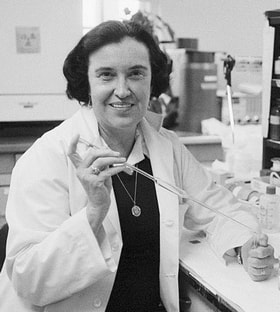 Rosalyn Sussman Yalow Rosalyn Sussman Yalow Rosalyn Sussman Yalow was an American physicist who won the Nobel Prize in Physiology or Medicine in 1977, which she shared with Roger Guillemin and Andrew V. Schally. Her work in the development of the radioimmunoassay to measure very low levels of hormones ushered a revolution in the medical sciences. She suffered both sex and religious discrimination, but she had a remarkably strong character and famously declared "I never thought that there was anything the matter with me. I just feel sorry for the discriminators". 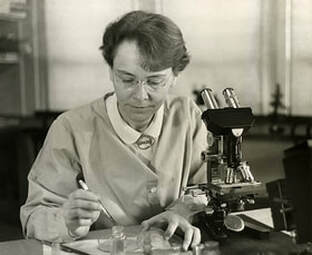 Barbara McClintock Barbara McClintock Barbara McClintock was an American geneticist who was awarded the Nobel Prize in Physiology or Medicine in 1983 for her discovery of transposable elements, which are popularly known as “jumping genes”. This is the only time that a woman has won an unshared prize in this category. She endured decades of discrimination in many forms and her work with transposons was so ahead of her time that it took more than 10 years for her discovery to be accepted by mainstream science.  Rita Levi-Montalcini Rita Levi-Montalcini Rita Levi-Montalcini was an Italian scientist who with Stanley Cohen won the Nobel Prize in Physiology or Medicine in 1986 for their discovery of Nerve Growth Factor (NGF) which promotes the proliferation, growth, and survival of cells. During her life Rita Levi-Montalcini had to deal with discrimination not only for being a woman but also for being a Jew. During the fascist regime of Benito Mussolini, she was laid off from her job at the University in 1938 and had to go into hiding with her family fearing for their lives. But even in these dire conditions she managed to continue her research by setting up a lab in her bedroom! 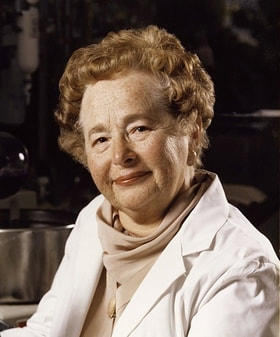 Gertrude Elion Gertrude Elion Gertrude B. Elion was an American biochemist who with George H. Hitchings won the 1988 Nobel Prize in Physiology or Medicine, which they shared with Sir James Black, for using new methods to design drugs. Unlike earlier methods based on trial and error, the procedures they employed used knowledge of the biochemistry of the diseases they were targeting (rational drug design) and led to the production of numerous pharmaceuticals which are used in areas ranging from cancer and AIDS to organ transplantation. She had trouble starting her career due to both being a woman and the times (the Great Depression). She was turned down by 15 graduate schools to which she applied, and supported herself by working in a number of different jobs while volunteering at labs. 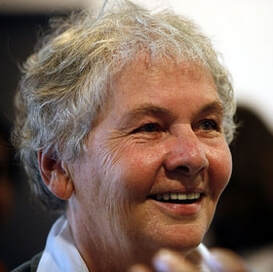 Christiane Nüsslein-Volhard Christiane Nüsslein-Volhard Christiane Nüsslein-Volhard is a German developmental biologist who with Eric F. Wieschaus won the Nobel Prize in Physiology or Medicine in 1995, which they shared with Edward B. Lewis, for their discoveries in the control of embryonic development. These discoveries affected aspects of many disciplines ranging from embryology to evolution. She has remarked that during her career she would often find that many men would have a hard time accepting that a woman could be smarter than them, particularly when she pointed out mistakes that they had made, and this led to many difficulties.  Linda Buck Linda Buck Linda B. Buck is an American biologist who with Richard Axel won the 2004 Nobel Prize in Physiology or Medicine for their work in identifying a family of genes that produce olfactory receptors (the structures in our noses with which we detect smells) and how these receptors are organized to generate the sensation of smell in the brain. She has stated, “As a woman in science, I sincerely hope that my receiving a Nobel Prize will send a message to young women everywhere that the doors are open to them and that they should follow their dreams.”  Françoise Barré-Sinoussi Françoise Barré-Sinoussi Françoise Barré-Sinoussi is a French virologist who with Luc Montagnier won the Nobel Prize in Physiology or Medicine in 2008, which they shared with Harald zur Hausen, for their discovery of the AIDS virus, HIV. This discovery, along with the work of Robert Gallo in the United States, made it possible to eventually produce antivirals and save the lives of millions of people. Barré-Sinoussi tells the story of how, as she was nearing the completion of her doctorate degree at the Pasteur Institute, she sought the advice of one of the senior staff members regarding the possibility that she could remain working at the institute. He replied, “A woman in science, they never do anything. They are only good at caring for the home and babies. Forget this dream.” Millions of AIDS patients are lucky that she decided to pursue the dream!  Carol Greider (Left) and Helen Blackburn (Right) Carol Greider (Left) and Helen Blackburn (Right) Elizabeth Helen Blackburn, an Australian, and Carol W. Greider, an American, are both molecular biologists who won the Nobel Prize in Physiology or Medicine in 2009, which they shared with Jack W. Szostak, for the discovery of telomeres and the enzyme that maintains them (telomerase). Telomeres protect the integrity of chromosomes, and their discovery has had a large impact in many fields ranging from cancer to aging. Early in her career, Greider had to overcome dyslexia and later, as she described it, she had to “face the challenge of being a woman with children in a man’s world”. Blackburn has written often about the right of every woman to choose a career without fear of discrimination for embracing motherhood. 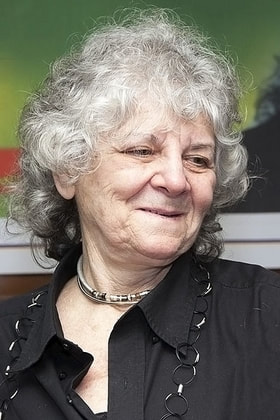 Ada Yonath Ada Yonath Ada E. Yonath is an Israeli crystallographer who won the Nobel Prize in Chemistry in 2009, which she shared with Venkatraman Ramakrishnan and Thomas A. Steitz, for her work in elucidating the structure and modes of action of ribosomes, which are the structures in the cells where proteins are made. Although she has stated that she never felt any gender discrimination throughout her career, she thinks that, “There are fewer women in science because society doesn’t encourage women to become scientists.” Yonath became only the fourth woman to win a Nobel Prize in chemistry, and the first in 45 years since Dorothy Crowfoot Hodgkin won it in 1964. 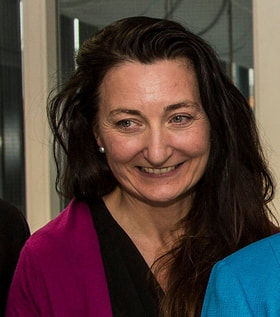 May-Britt Moser May-Britt Moser May-Britt Moser is a Norwegian neuroscientist who along with her husband Edvard I. Moser won the Nobel Prize in Physiology or Medicine in 2014, which they shared with John O'Keefe, for their discovery of neurons in the brain (grid cells) that are responsible for processing the information about the location of an animal with respect to its environment. She has remarked that getting women into science is important to change the culture, because if men are not accustomed to working with women, they will continue to only support other men.  Tu Youyou Tu Youyou Tu Youyou is a Chinese pharmaceutical chemist who won the Nobel Prize in Physiology or Medicine in 2015, with she shared with William C. Campbell and Satoshi Ōmura, for her role in the discovery of a compound, artemisinin, derived from a traditional Chinese herb (Wormwood). This chemical has been used against malaria saving the lives of millions of people. Since the setting in which Youyou made her discovery was part of a secret military project, her role in the discovery only became known 25 years later when Western scientists from the NIH managed to track her down by reading old government documents. Her contribution had never been recognized in China due to discrimination. Youyou was known as “the professor of the three Nos”: no post-graduate degree, no membership in the Chinese Academy of Sciences, and no research experience outside China.  Donna Theo Strickland Donna Theo Strickland Donna Theo Strickland is a Canadian physicist who with Gérard Mourou won the Nobel Prize in Physics in 2018, which they shared with Arthur Ashkin, for work that allowed the production of very short and intense laser pulses. This development has now been applied in areas such as eye surgery. Strickland is the third woman to receive a Nobel Prize in physics. She has stated that during her career she has always been treated as an equal by the men around her and she has been paid the same as them. This is quite a change from her predecessor Nobel laureate in Physics, Maria Goeppert Mayer, who was not offered a paying job related to her career until after she did her Nobel Prize winning work! 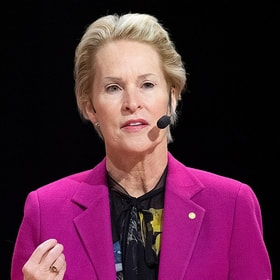 Frances Hamilton Arnold Frances Hamilton Arnold Frances Hamilton Arnold is an American Chemical Engineer who won the Nobel Prize in Chemistry in 2018, which she shared with George P. Smith and Sir Gregory P. Winter, for her use of directed evolution to engineer enzymes with new activities; a process that has found wide applications in industry and science. She has stated that she has experienced stupid sexist remarks and behavior in her career, but that she is gifted with the ability to ignore the people who made them. She considers the fact that she and Donna Strickland both won a Nobel Prize in 2018 may be the beginning of a steady stream of female Nobel Prize winners, and her message for young women is, “Don’t leave this wonderful, fun work just for the men.” Photo of Marie Curie from Tekniska museet’s flickr page (author unknown) is used here under an Attribution 2.0 Generic (CC BY 2.0) license. The photograph of Irene Joliot Curie from the Smithsonian Institution has no known copyright restrictions. The photograph of Gerty Theresa Cori from the National Institutes of Health is in the public domain. Portrait of Maria Goeppert Mayer from the United States Department of Energy is in the public domain. The image of Dorothy Hodgkin from nobelprize.org is used here under the doctrine of Fair Use. The photo of Rosalyn Yalow from the United States Information Agency is in the public domain. The photograph of Barbara McClintock from the Smithsonian Institution has no known copyright restriction. Photo of Rita Levi Montalcini by the Presidenza della Repubblica Italiana is free for use with attribution. Photo of Gertrude Elion from the Welcome Collection is used here under an Attribution 4.0 International (CC BY 4.0) license. Photo of Christiane Nüsslein-Volhard by Rama is used here under an Attribution-ShareAlike 2.0 France (CC BY-SA 2.0 FR) license. The Linda Buck photograph from the Royal Society is used here under an Attribution-Share Alike 3.0 Unported license. Photo of Françoise Barré-Sinoussi by Prolineserver is used here under an Attribution NonCommercial ShareAlike 2.0 license. Photo of Carol Greider and Elizabeth Blackburn by Gerbil is used here under an Attribution-Share Alike 3.0 Unported license. Photo of Ada E. Yonath by Hareesh N. Nampoothiri is used here under an Attribution-Share Alike 3.0 Unported license. Photo of May-Britt Moser by Henrik Fjørtoft/NTNU Komm.avd is used here under an Attribution-Share Alike 2.0 Generic license. Photo of Tu You you by Bengt Nyman is used here under an Attribution-Share Alike 4.0 International license. Photos of Donna Strickland and Frances Arnold by Bengt Nyman are used here under an Attribution 2.0 Generic license.
|
Details
Categories
All
Archives
June 2024
|
 RSS Feed
RSS Feed